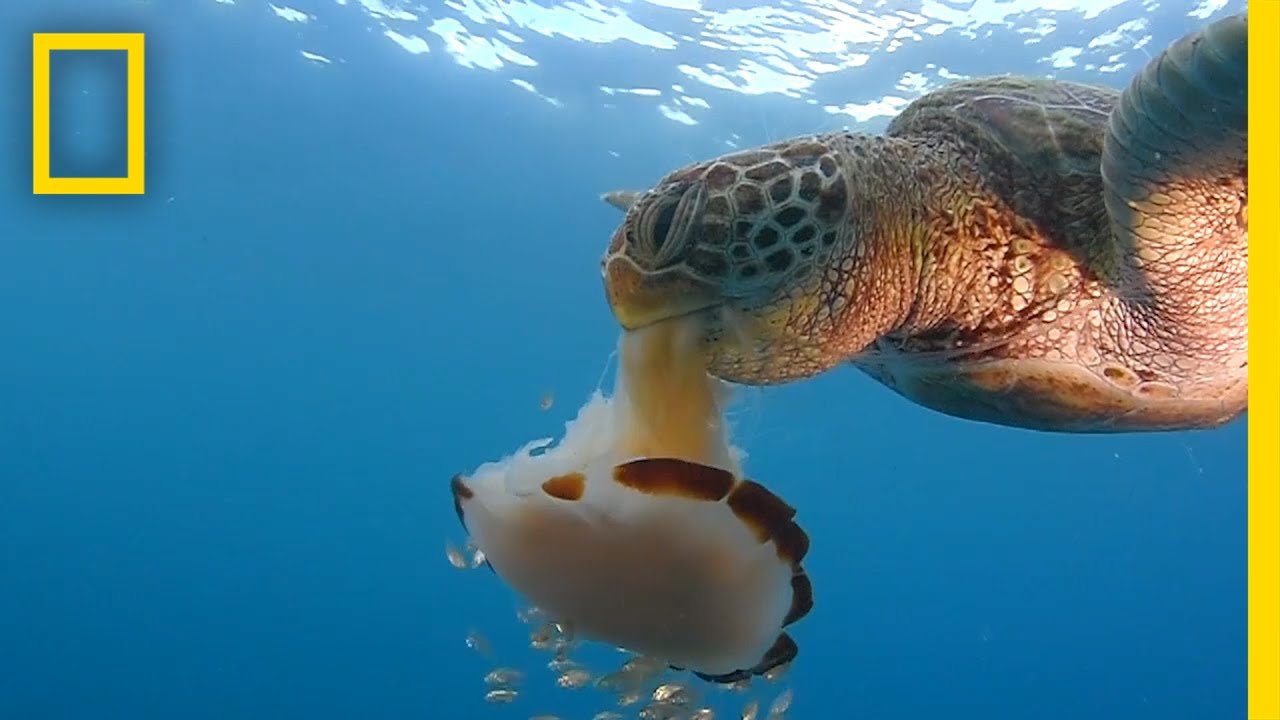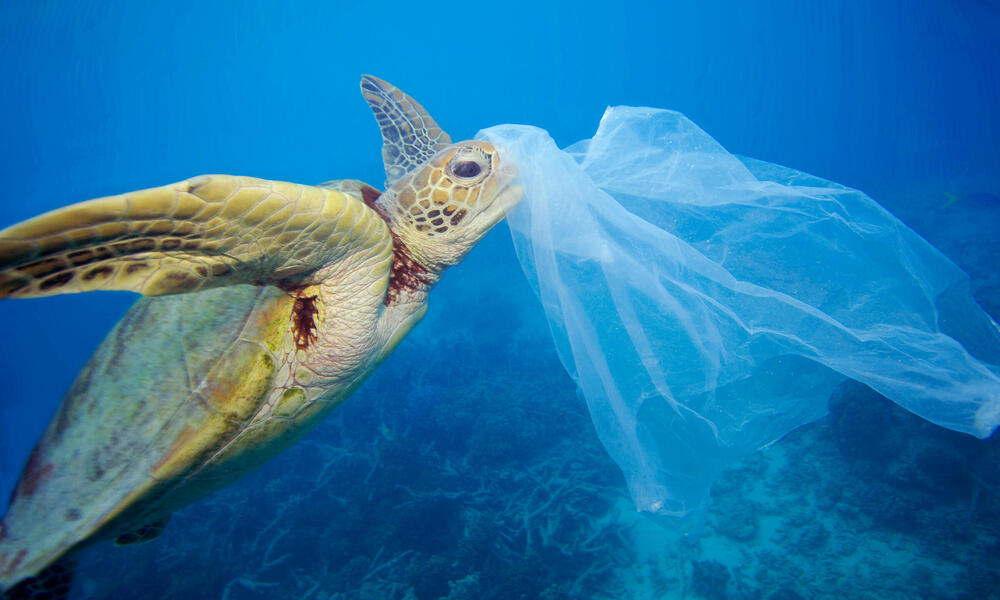Why Do Sea Turtles Eat Jellyfish

Sea turtles have been around for millions of years and during that time they have developed a number of interesting adaptations. One of the most interesting things about sea turtles is their diet. Sea turtles are carnivorous animals and their diet consists mostly of fish, crabs, and other marine invertebrates.
However, sea turtles will also eat jellyfish. Why do sea turtles eat jellyfish?There are a number of reasons why sea turtles might eat jellyfish.
Jellyfish are an easy source of food for turtle predators like sharks and dolphins. When these predators hunt in groups, they can drive entire schools of fish towards shore where the turtles can then feed on them. Additionally, jellyfish are slow-moving animals that are not able to put up much of a fight when attacked by a predator.
As apex predators, sea turtles have few natural predators and so they can afford to be choosy about what they eat. And what they seem to prefer most are jellyfish.Jellyfish are not only an important part of the sea turtle’s diet, but also a critical link in the ocean food chain.
By eating jellyfish, sea turtles help keep the population of these creatures in check, which benefits the overall health of marine ecosystems.There are several reasons why jellyfish appeal to sea turtles. For one, they are relatively easy to catch and digest.
Jellyfish don’t have a hard skeleton like other fish, so they break down quickly in a turtle’s stomach.Another reason is that jellyfish are packed with nutrients that help keep sea turtles healthy. These include protein, essential amino acids, and omega-3 fatty acids.
Omega-3s are especially important for maintaining a turtle’s shell condition and helping with growth and development.So next time you see a sea turtle munching on a jellyfish, know that it’s not just satisfying its hunger – it’s playing an important role in keeping our oceans healthy!
Inside a Sea Turtle Mouth | How Turtle can eat a jellyfish
Do Sea Turtles Eat Jellyfish And Get High
Do Sea Turtles Eat Jellyfish And Get HighDid you know that sea turtles love to eat jellyfish? And not only that, but they seem to get a bit of a “high” from it too!
It’s true – scientists have observed that after eating jellyfish, sea turtles often display what looks like a grin on their face. They may also swim erratically and do somersaults. Some even appear to be sleepwalking!
So what gives? Well, it turns out that the toxins in jellyfish are actually quite similar to drugs like LSD. That explains why these creatures seem to act so differently after eating them!
Of course, this isn’t exactly a good thing for the turtles. While the effects may be temporary and harmless, it’s still not ideal for them to be ingesting mind-altering substances. But at least we now know why they seem to enjoy those pesky jellyfish so much!
Do Sea Turtles Get High
The ocean is full of creatures that use strange and unique methods to get high. Take, for example, the sea turtle. These gentle giants have been known to nibble on toxic algae in order to get a little buzz.
It’s not exactly clear why they do it, but scientists believe that it may help them cope with stress or ward off predators. Whatever the reason, it’s definitely an interesting way to get your fix!
Do Green Sea Turtles Eat Jellyfish
Green sea turtles are one of the many species of turtles that live in the ocean. They get their name from the greenish color of their skin. These turtles are found in warm waters all over the world, including the coasts of Florida and Australia.
Green sea turtles eat a variety of things, but they seem to really enjoy eating jellyfish.Jellyfish are not actually fish, but they are marine animals that have a gelatinous body. Jellyfish come in many different shapes and sizes and can be either translucent or very colorful.
Some jellyfish even glow in the dark!Green sea turtles will eat just about any type of jellyfish, but they seem to prefer the ones that are rounder in shape and have shorter tentacles. The turtle will swim up to the jellyfish and then open its mouth wide to take it in.
It is believed that green sea turtles can eat up to 1000 jellyfish per day!
Do Sea Turtles Eat Moon Jellyfish
Most turtles are carnivorous, eating a diet that includes fish, shellfish, crabs, and other invertebrates. Some of the larger species may also include small mammals and birds in their diet. The loggerhead turtle is one of the primary predators of the moon jellyfish.

Credit: www.worldwildlife.org
What Happens When Sea Turtles Eat Jellyfish?
Sea turtles are designed to eat jellyfish. Their mouths have a special shape that helps them capture and consume these slippery creatures. When a turtle bites into a jellyfish, the tips of its teeth puncture the jelly’s surface.
This releases the prey’s stinging cells, which would normally paralyze the turtle’s prey. But sea turtles are immune to the sting of most jellyfish. They have a thick lining in their mouths that protects them from getting hurt.
Once a turtle has a mouthful of jelly, it quickly swallows before the tentacles can wrap around its head and choke it. The whole meal is over in just seconds! Sea turtles don’t chew their food, so they rely on stomach acids to break down the jellyfish flesh.
How Come Sea Turtles Eat Jellyfish?
Jellyfish are a type of plankton, which are small organisms that float in the ocean. They are an important part of the diet of many animals, including sea turtles. Sea turtles eat jellyfish because they are an easy source of food and they provide the turtle with nutrients that it needs.
Jellyfish are made up mostly of water and they don’t have a backbone, which makes them easy for a turtle to eat. Turtles use their beak to break off pieces of the jellyfish and then swallow them whole. Jellyfish also contain a lot of protein and other nutrients that turtles need to stay healthy.
Some people think that sea turtles only eat jellyfish because they are attracted to the light that jellyfish give off at night. However, studies have shown that turtles will eat jellyfish during the day as well as at night. So, it is likely that sea turtles eat jellyfish because they find them to be a nutritious and convenient food source.
Do Sea Turtles Actually Eat Jellyfish?
Yes, sea turtles actually do eat jellyfish. Jellyfish are a type of zooplankton that drift in the ocean currents and are a major food source for many animals including sea turtles. Sea turtles have a specially adapted mouth and throat that helps them to eat these slippery creatures.
How Does a Sea Turtle Eat a Jellyfish Affect Both the Population?
A sea turtle’s diet can have a big effect on both the population of the turtles and the jellyfish they eat. When turtles eat jellyfish, they help to keep the jellyfish population in check. This is because turtles are one of the few predators that feed on jellyfish.
If there were no turtles eating jellyfish, the jellyfish population would explode and eventually out compete other species for food. This would lead to a decrease in biodiversity and an overall decline in ocean health.
Conclusion
Sea turtles have been around for over 110 million years and are one of the earth’s oldest animals. These gentle giants have survived many mass extinctions and evolved into the creatures we know today. As apex predators, they play a critical role in maintaining healthy ocean ecosystems.
Sea turtles are found in every ocean except for the Arctic and Antarctic. There are seven different species of sea turtle: green, loggerhead, hawksbill, Kemp’s ridley, flatback, Olive Ridley, and leatherback. Out of these seven species, only six are found in U.S waters.
Jellyfish are an important part of a sea turtle’s diet. Adult loggerhead turtles primarily eat bottom-dwelling crabs but will also consume mollusks, shrimp, squid, fish eggs ,and vegetation . A juvenile loggerhead’s diet is about 90% jellyfish .
Loggerheads aren’t the only ones with a taste for jellyfish; all sea turtles eat them at some point during their life cycle . Scientists believe that the stingers on jellyfish may actually help keep a turtle’s mouth free from parasites .So why do these ancient animals enjoy such a modern delicacy?
For one thing , jellyfish populations have exploded in recent years due to overfishing , which has eliminated many of their predators . Additionally , climate change has led to warmer ocean temperatures , making it easier for jellyfish to survive and reproduce . This abundance of food means that turtles don’t have to expend as much energy searching for prey , which is especially important for nesting females who need to conserve their strength for egg production .
In short ,sea turtles eat jellyfish because they’re easy to find and there’s plenty of them to go around.